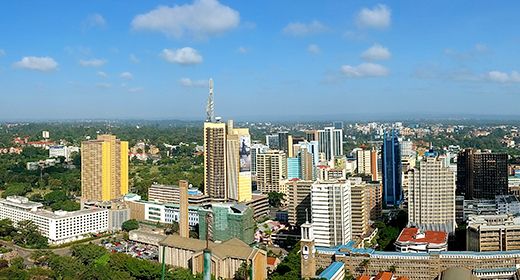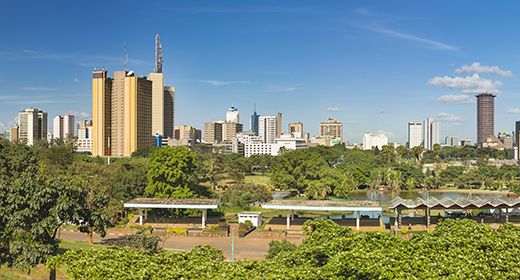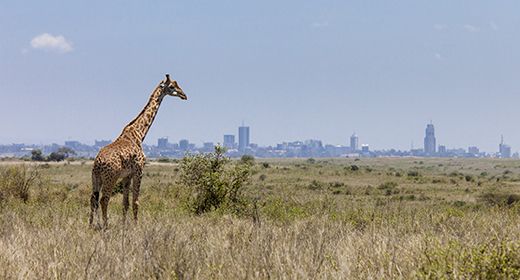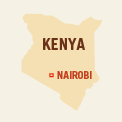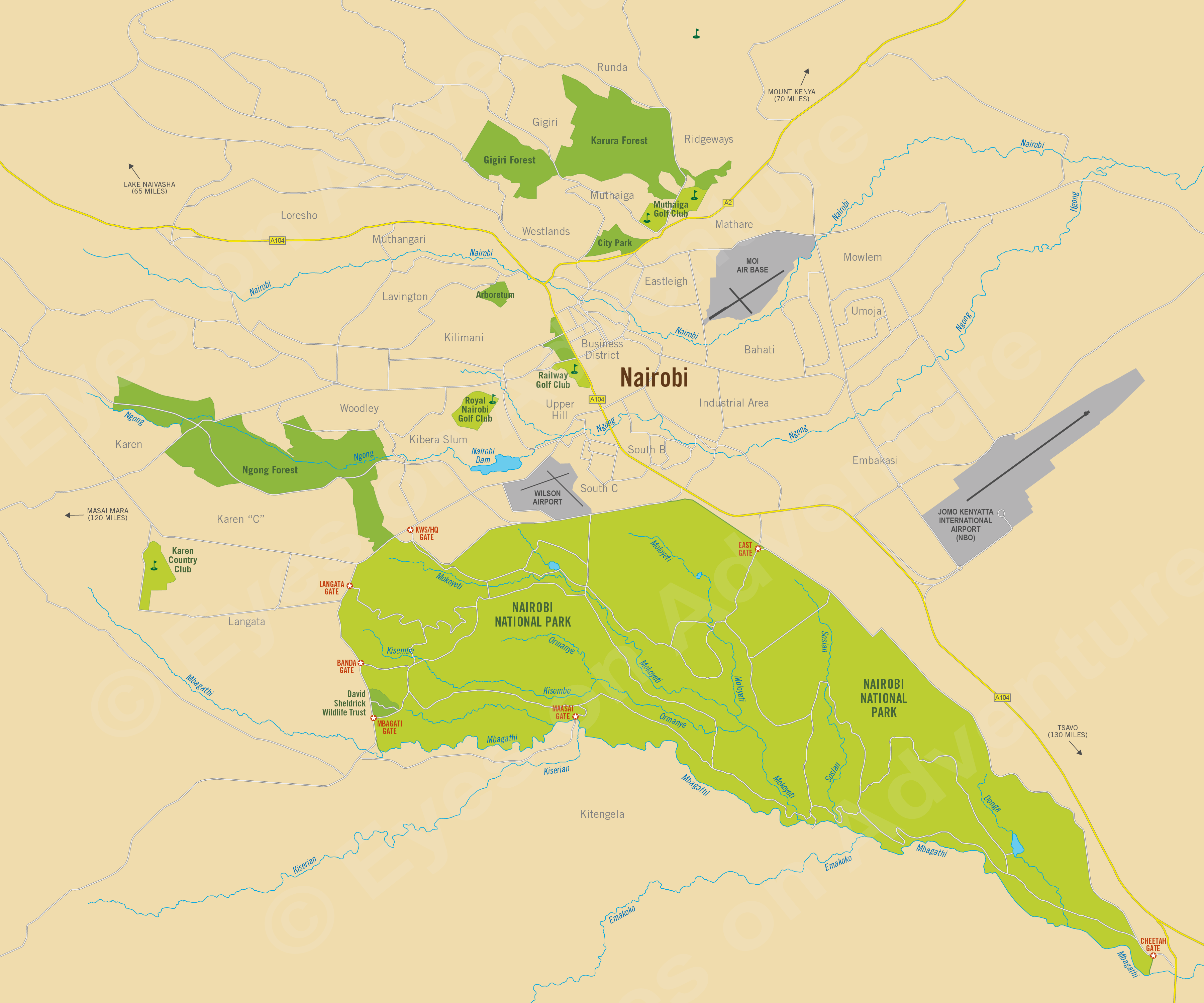Nairobi
Region Links: Amboseli & Chyulu Hills, East Coast Kenya, Great Migration, Laikipia, Masai Mara, Nairobi, Rift Valley & Central Highlands, Samburu, Tsavo
Highlights
- Nairobi National Park offers top-notch game viewing bordering the city
- David Sheldrick elephant orphanage to help their conservation efforts with baby elephants
- Excellent accommodation, several good museums and easy access to wildlife destinations
EOA Recommends: Giraffe Manor, Hemingways Nairobi, House of Waine, The Emakoko
Nairobi is the largest city in East Africa and the main gateway to the region. Although not considered a destination, there are things to do and see in Nairobi before or after your safari.
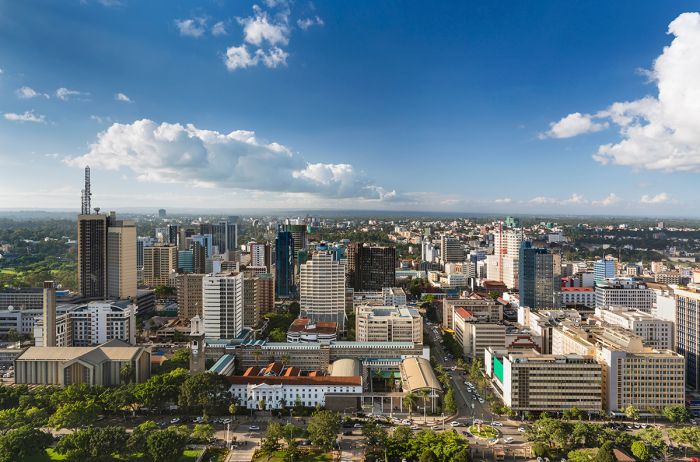
View over Nairobi, Kenya.
Nairobi National Park borders the city to the south and, surprisingly for a park bordering a major city, offers a very good wildlife experience. There are several hotels around the park, some of them on the distant southern border, offering a respite from the noise and sights of Nairobi.
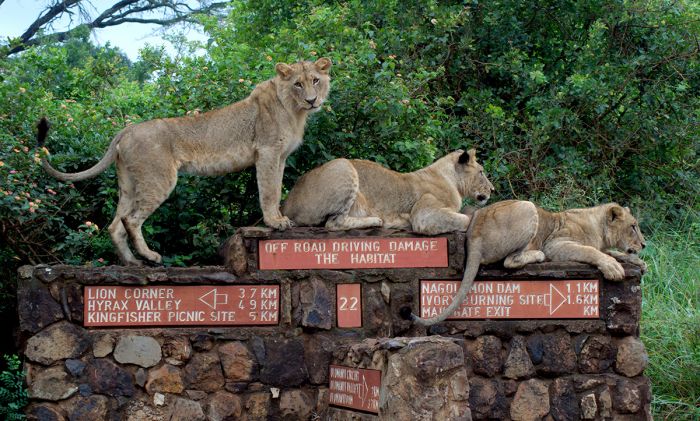
Lions in Nairobi National Park, Kenya.
The David Sheldrick Wildlife Trust is a "must do" while in Nairobi. The organization is one of the leading conservation efforts in the country, working to save orphaned elephants and baby rhinos. The orphanage facility occupies land in the Nairobi National Park and visits are highly recommended. Pre-booking is required to attend the baby elephant feeding.
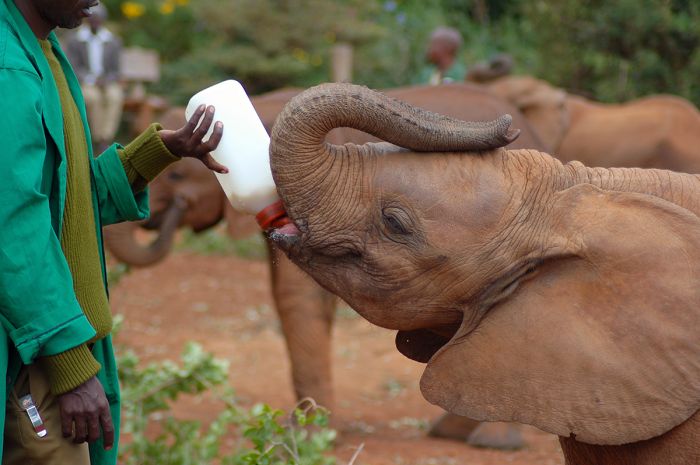
Baby elephant at the Sheldrick Elephant Orphanage, Nairobi.
Jomo Kenyatta International is the region's largest and busiest airport and most visitors to Kenya arrive and depart here. Wilson Airport is the main regional airport servicing tourism to the Masai Mara and other destinations throughout Kenya.
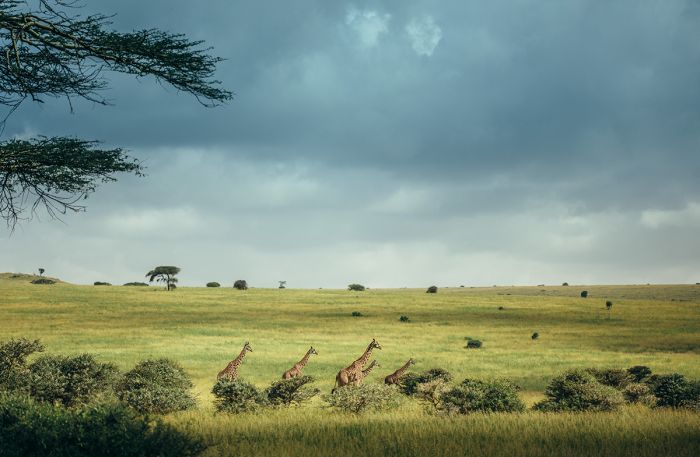
Giraffes in Nairobi National Park.
Nairobi is Kenya's capital city, as well as it most populous urban area. There city proper has a population of 2.75 million and the combined metro area population is 6.5 million. Many of Nairobi's inhabitants live in slums, with around 2.5 million slum dwellers in the city.
Read More...
David Sheldrick, Giraffe Centre, History, Karen Blixen Museum, Nairobi National Park
History
Nairobi is a new city in terms of Africa, only founded in 1899. It started out as a 'temporary settlement' along the new East African Railway as it was being constructed from Mombasa on the coast towards Kampala, in Uganda.
The settlement served as a campsite for the thousands of Indian workers employed by the British to build the railroad. Construction had come to a halt due to the swampy land and steep gradient around the location and the laborers camped here while the engineers figured out how to proceed.
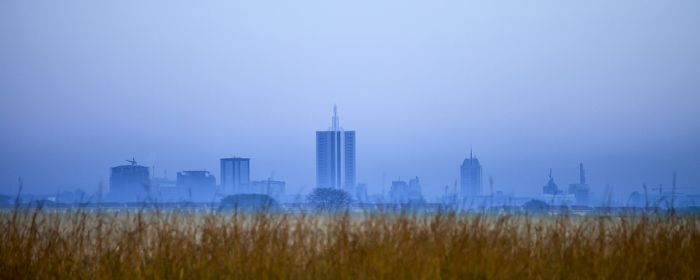
Misty morning view of Nairobi's skyline.
Although no plans were ever in place to make it a permanent settlement, the young town took root. By 1907, it had replaced Mombasa as the administrative capital of British East Africa. Settlers from Europe soon started arriving in large numbers and the local Africans were forced into employment due to tax demands upon them (although they had no representation). Tribes like the Maasai and Kikuyu were removed onto special reserves created for them to the south and north.
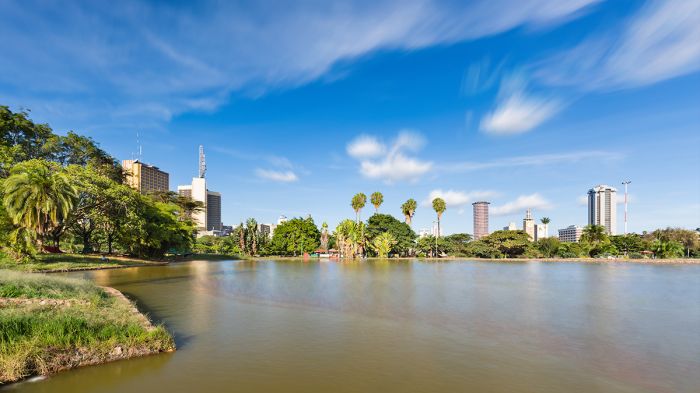
View from Uhuru Park in central Nairobi.
Today the city is a mix of cultures, including African, Asian and European, none of which were originally local to the region. This combination of ethnic groups gives Nairobi its current character, one of vitality and modernism.
Nairobi National Park
Originally declared a game reserve by the British colonial government, Nairobi National Park was given full protection in 1946.
It may be surprising to learn that Nairobi National Park, covering just 45 square miles (117 sq kms), offers exceptionally good wildlife viewing opportunities. This is chiefly because although the park is fenced along three sides, which border populated areas, it is open to the south, so wildlife migrates freely in and out of the park. An actual 'mini migration' of herbivores occurs into and out of the park, second-largest in size only to that of the Mara-Serengeti.
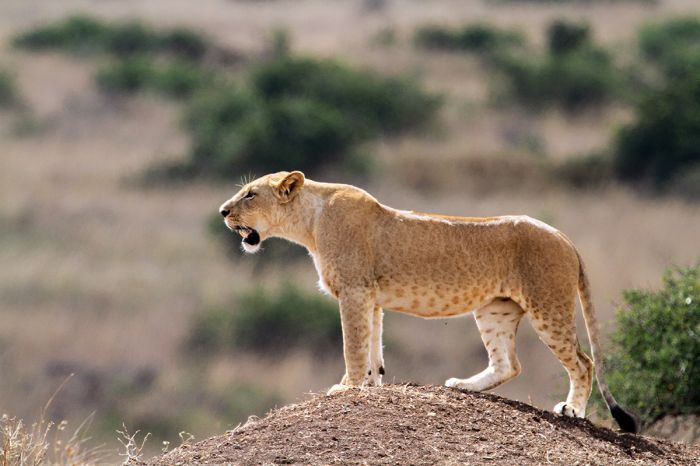
Lioness in Nairobi National Park.
Over 80 species of mammals and 400 species of birds have been recorded in the park. There are accommodations along the southern side of the park and anyone with an available afternoon or morning, perhaps before an onward flight, should consider a game drive in the park.
Lion, leopard, cheetah and spotted hyena are commonly seen, as are black rhino, giraffe, buffalo, zebra, hippo and numerous species of antelope. Of Africa's Big Five animals, only elephant are absent (although they can be seen at the Sheldrick Orphanage). July and August are particularly rewarding, when the permanent pools of water attract herds of wildebeest, gazelle and zebras, and predators are never far away.
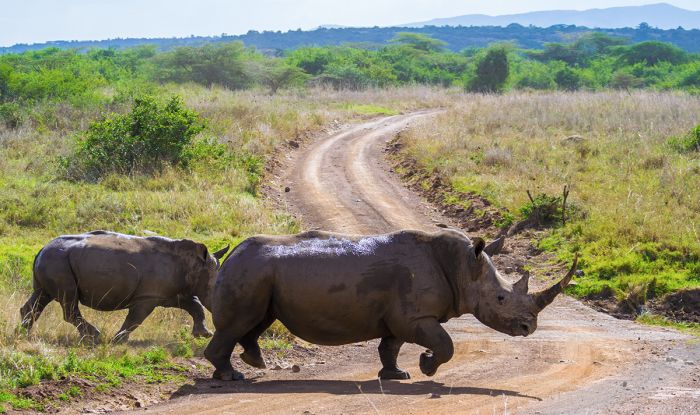
Black rhinos in Nairobi National Park.
David Sheldrick Wildlife Trust
Occupying a small plot of land in Nairobi National Park along the western border, the David Sheldrick Wildlife Trust is an elephant and rhino orphanage which is open for daily tours to the public (by advance reservation only) and well worth a visit. The facility hand-rears orphaned baby elephants (and sometimes rhinos) for eventual release back into the wilds in Tsavo National Park.
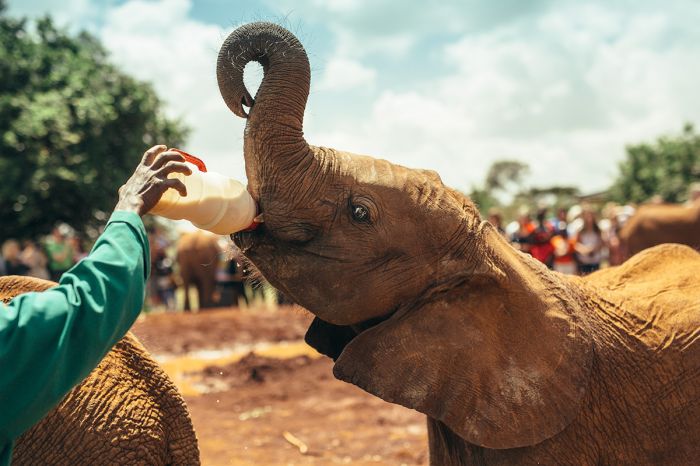
Baby elephant at the David Sheldrick orphanage in Nairobi.
The staff at Sheldrick have become the world's top experts on hand-rearing baby elephants, and each baby receives a dedicated 24-hour guardian, whose duties include feeding, cleaning and even sleeping with the little elephant.
Without the 'proper' rearing, stimulation and care, baby elephants usually fail to survive and even if they do, often become unhappy and unable assimilate with a herd, lacking the social behaviors that would normally be taught to them in the wild.
The herd in Tsavo are primarily made up of animals that were Sheldrick orphans themselves and are responsible for adopting most of the orphanage's returnees.
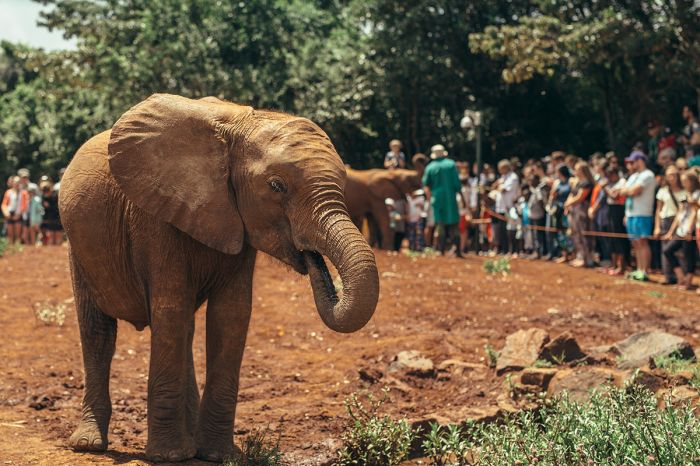
Elephant and visitors at the Sheldrick Wildlife Trust, Nairobi.
The non-profit organization was founded in 1977 by Daphne Sheldrick and it has been highly successful in its mission. The trust is named in honor of Ms. Sheldrick's late husband David, who was the legendary and founding warden of Tsavo East National Park. Guests are encouraged to 'adopt' a baby elephant and will receive regular updates on the baby's progress and hopefully, its eventual release to join the herd in Tsavo.
Pre-booking visits to the facility is suggested, especially to take part in feeding of the babies.
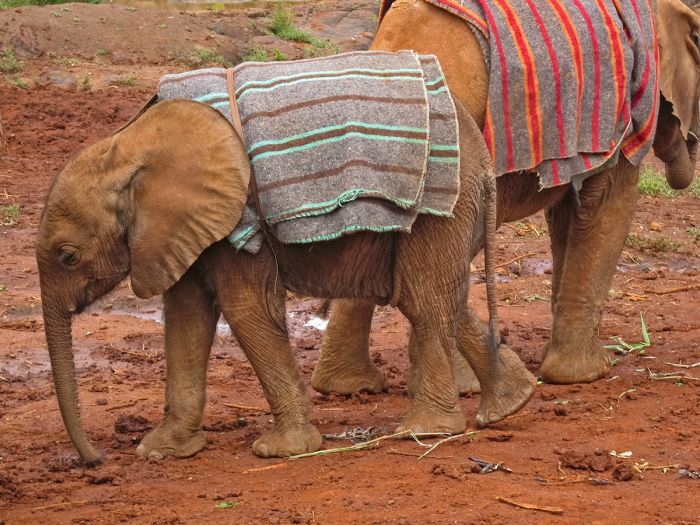
Baby elephants at the David Sheldrick facility in Nairobi.
Other Points of Interest
The African Fund for Endangered Wildlife's (AFEW) Giraffe Centre protects and breeds the endangered Rothschild's giraffe, while educating the public, especially children about conservation. The centre is open to the public and is located alongside the wonderful, Scottish-style Giraffe Manor, just west of Nairobi National Park.
Interacting with some of the ambassador giraffes is possible and especially popular with children. There is also a "safari walk" boardwalk offering a glimpse of giraffes and excellent bird watching.
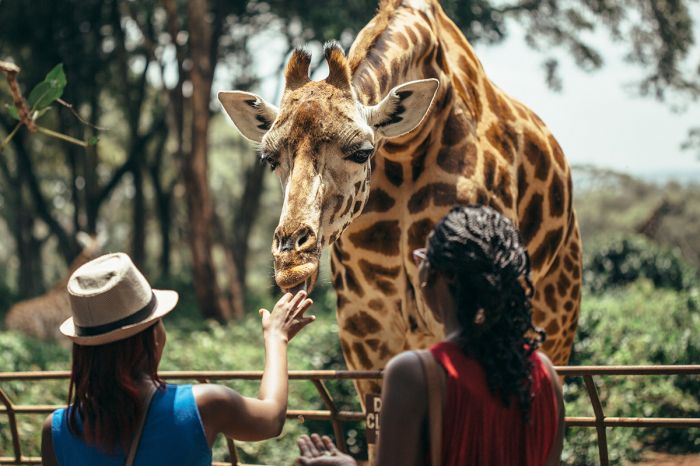
Giraffe interaction at AFEW Giraffe Centre, Nairobi.
The Karen Blixen Museum, the house where much of her book Out of Africa took place, is open daily to the public. The home and gardens have been painstakingly restored to their original appearance. Visits on the weekends can be very crowded, so try to schedule a visit on a weekday, when you will be more free to wander the delightful gardens.
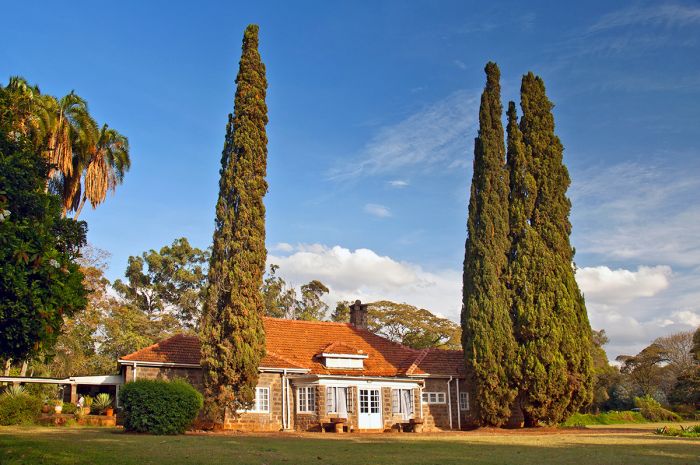
Karen Blixen Museum in the Nairobi's suburb of Karen.
Read More...
David Sheldrick, Giraffe Centre, History, Karen Blixen Museum, Nairobi National Park
Great Good Fair Poor
- Jan
- Feb
- Mar
- Apr
- May
- Jun
- Jul
- Aug
- Sep
- Oct
- Nov
- Dec
Nairobi
Nairobi, and particularly Nairobi National Park for wildlife viewing, are best during the dry months from June thru September. This region of Kenya has two rainy seasons, the short rains, which occur for about one month during November and December, and the long rains, which begin in March and continue through April and into May. Nairobi itself, while not really a destination, may be visited at any time throughout the year.
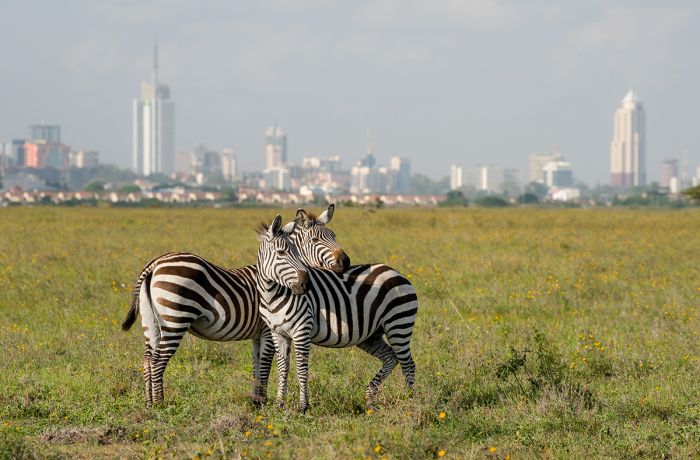
Zebras in Nairobi National Park, Kenya.
The Masai Mara and The Great Migration
The annual movement of wildebeest and zebras across the Serengeti-Mara ecosystem is one of the greatest spectacles in the natural world. These large herds move in a circular track across Kenya and Tanzania, taking a full year to complete. The migrating herds are in the Kenya part the trek on the grassy plains of the Masai Mara from around late July until sometime in October.
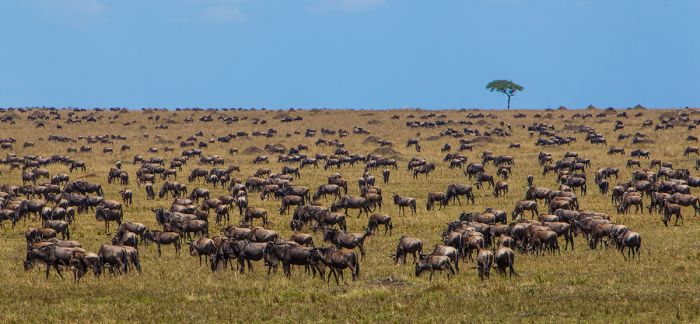
Wildebeests on the grassy plains of the Masai Mara, Kenya.




